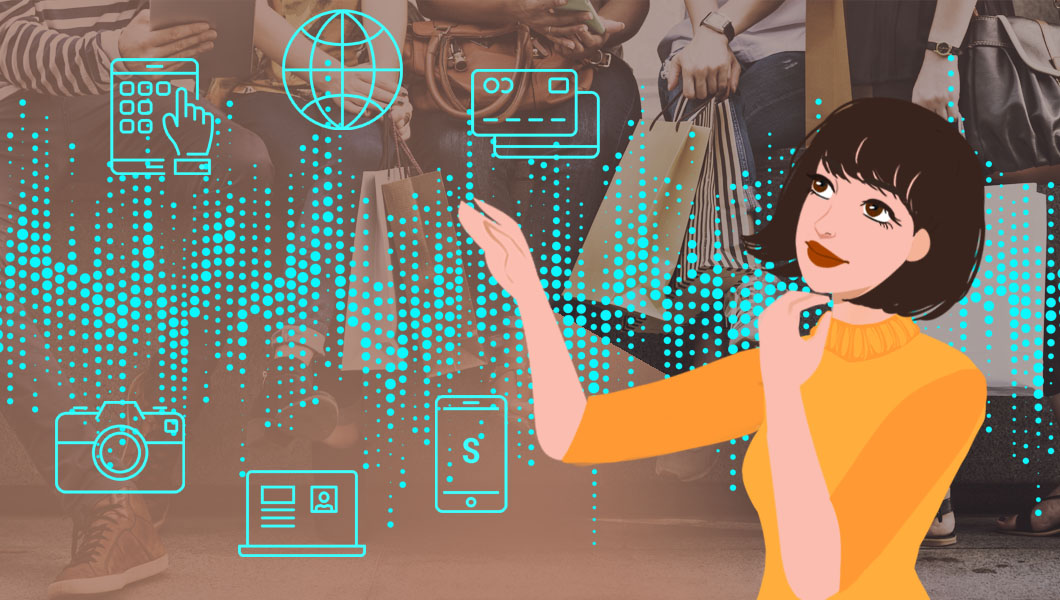Digital in Retail: Innovating to Enhance Customer Experience

The term digital disruption has been used across industries and sectors to an extent where it almost feels like disruption is the new norm. The wave of transformations that digitization has instigated is evident. That being said, the digital revolution is, perhaps, most visible in the retail sector. The simple reason for this being the customer-centric nature of the market.
The digital trend is equipping trendsetters in the retail sector with cutting edge tech solutions that allow them to explore new customer segments and, at the same time, reduce operational costs. One of the most interesting instances that digitization has brought on is the seamless merging of the commerce and e-commerce. As a result of this the market has shown a remarkable potential for growth. According a forecast by Forrester, the digital retail market in the US is projected to capture up to 17% of all retail sales by the year 2022.
But the digitization of the retail sector would hold no importance if it did not enhance customer interactions and transactions. Customer experience (CX) is precisely where the point of digital retail succeeds. For example, digital is transforming the operational boundaries of businesses. By restructuring functional protocols, organizations are able to better align themselves to customer needs. Additionally, the implementation of various premium technologies, which we will be discussing, has made monitoring real-time customer behavior a reality.
While businesses are rapidly adopting these technologies, they are not the only factor affecting the current market scenario. The dynamic nature of customer demands, evolving contemporary lifestyle, and demographics are constant forces in shaping the digital retail landscape.
Riding the Technology Wave
 Using technology to create seamless customer journeys is the path to retention
Using technology to create seamless customer journeys is the path to retention
When we talk about the technological impact the retail sector is witnessing, the arguments are widely dispersed across business units. For the sake of convenience, the role technology plays can be broken down into categories, the customer-facing ‘front end’ and the operational ‘back end’.
Front End
The modern customer is always looking for convenient ways to compare products and make well researched purchases. As such, the retail sector is experiencing the rise of what is being called the ‘digital customer’. The evolution of digitization in the retail sector is largely centered on the digital customer and providing them with unique experiences.
One such tech trend that is seemingly gaining traction amongst digital retail providers is Augmented and Virtual Reality (AR/VR). By implementing Augmented Reality businesses can give an enriched experience to customers. The technology can be further used to provide emotional resonance by building on the sensory aspect of customer experience.
Providing customers with compelling experiences will allow them to make better decisions while increasing the brand value of the provider. The application of AR in retail is not a farfetched notion of the future. A Netherlands-based furniture retailer has recently launched an AR catalogue app that allows buyers to test the products to their satisfaction.
While AR/VR makes for a convincing argument in providing customers with an interactive experience, Artificial Intelligence is another trend that is transforming customer experiences. AI and its associated implementations such as machine learning is opening up avenues of opportunities for digital retailers.
At a time when the market is moving towards a more personalized approach to solutions, AI has the potential to become the pivotal technology that drives this revolution. Chatbots and other applications of AI are already proving to be efficient tools to provide customers with a personalized experience. AI can also help customers have better visibility into price comparisons.
Back-end
Executing operations with accuracy can be the ‘make or break’ of businesses. In a customer-centric market such as retail, this arguments holds especially true.
One of the most important aspects of back-end operations in the retail sector is logistics. A recent study by the World Economic Forum (WEF) reported that industry logistics would be worth USD 1.5 trillion by the year 2025.
Among the various technologies that making such a growth possible is the much discussed Internet of Things (IoT). Leveraging IoT in logistics can enable digital retailers to monitor a wide range of logistical elements, such as shipments, transportation assets (connected commercial trucks), and customer requirements.
The Road Ahead
 Attention to detail is the critical factor that sets apart brands with good CX
Attention to detail is the critical factor that sets apart brands with good CX
The digital future projected for the retail industry is a promising one. However, there are certain challenges that will need be addressed along the way. One such hurdle is selecting the right technology provider. It is important to choose a tech provider who is capable of considering the nuances involved in retail operations.
It is important to understand that while trends define the navigational roadmap of the industry, attention to the little details is what determines the success or failure of a venture.


 By
By 









